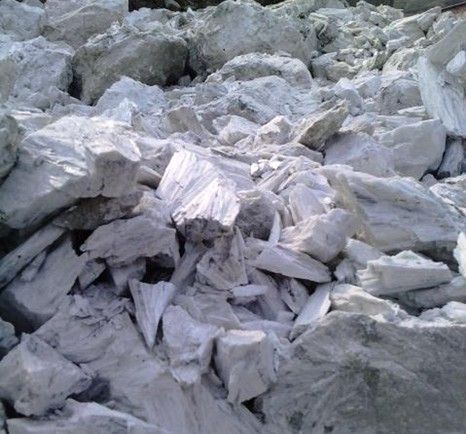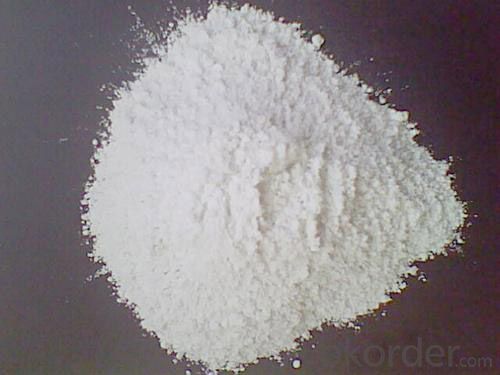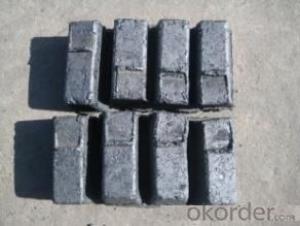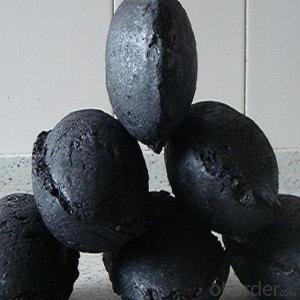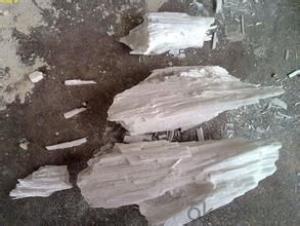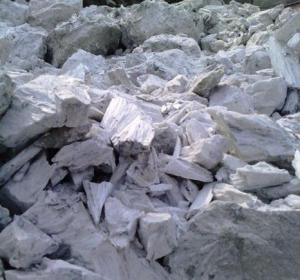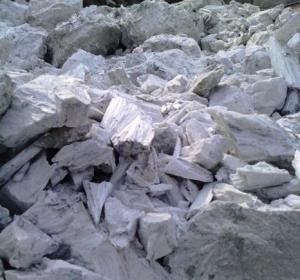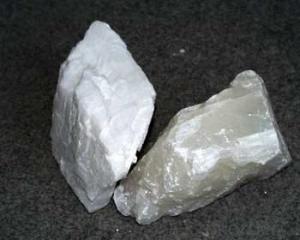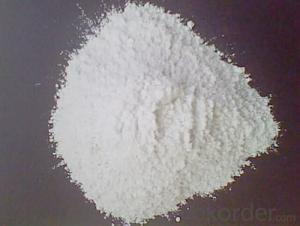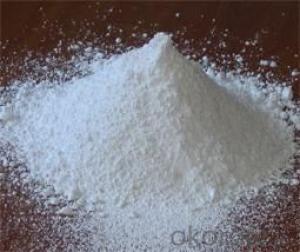Wollastonite under different grade and different size
- Loading Port:
- Tianjin
- Payment Terms:
- TT OR LC
- Min Order Qty:
- 20 m.t.
- Supply Capability:
- 3000 m.t./month
OKorder Service Pledge
OKorder Financial Service
You Might Also Like
USAGE:
Wollastonite is widely used in ceramic, coatings, plastics, rubber, welding, chemical, metallurgy, construction, automobile ,asbestos substitutes and paper industry . We can supply different grades of wollastonite powder, Acicular Wollastonite and other formal product.
Wollastonite
Cas no: 13983-17-0
1*20 FCL can load about 25-27 tons.
Brief Introduction of Our Products Wollastonite:The formula of Wollastonite is CaSiO3.The ideal chemicalspecifications are as followed:SiO2 :51.75% ; CaO:48.25% , heated-Swelling,
Coefficient:6.5*10-6°C-1, Moh's Hardness 4.5-5.0 , Density:2.8 , melting Point 1540°C , Refraction Index 1.62
It is mainly used in produces Coatings , plastics , Ceramic and building materials
SPECIFICATION OF CERAMICS GRADE
DescriptionWhite powder
ItemsSiO2 %CaO %MgO %Fe2O3 % S %P %Al2O3Loss %
Grade A≥49≥46≤0.8 ≤0.3≤0.01≤0.01 ≤ 0.8≤1.5
Grade B≥50 ≥43≤0.8 ≤0.3≤ 0.01≤0.01 ≤ 0.8≤3
Grade C≥51≥40≤0.8≤0.35≤ 0.01≤0.01≤ 0.8≤5
Size80-400 mesh or as request
Specification for Metallurgical Grade
ItemsSiO2 %CaO %MgO %Fe2O3 % S % P %Loss %White Grade
Grade A45-5638-43≤0.8≤ 0.2≤0.001≤0.0014.5-5.5 ≥80
Grade B49-5144-46≤0.8≤ 0.2≤0.001≤0.0011-2.5 ≥85
Size: From 80 mesh to 400mesh or adjusted according to customer’s request
4: Picture

- Q: How many points can Yongan change for 1 carbon coins?
- Every Thursday at 19:00, carbon points change for carbon coins, 19:30 carbon coins exchange gifts
- Q: What are the environmental impacts of carbon emissions?
- Carbon emissions have a range of significant environmental impacts. One of the most pressing issues is the contribution to climate change. Carbon dioxide (CO2) is a greenhouse gas that traps heat in the Earth's atmosphere, leading to a rise in global temperatures. This increase in temperature has far-reaching consequences, including melting polar ice caps, rising sea levels, and more frequent and intense extreme weather events such as hurricanes, droughts, and floods. Another environmental impact of carbon emissions is ocean acidification. When CO2 is released into the atmosphere, a portion of it dissolves into the oceans, forming carbonic acid. This acidification disrupts the pH balance of the ocean, which is vital for the survival of marine life. It negatively affects the growth and development of coral reefs, shellfish, and other organisms that rely on calcium carbonate to build their shells or skeletons. Furthermore, carbon emissions contribute to air pollution. The burning of fossil fuels releases not only CO2 but also other pollutants such as nitrogen oxides (NOx), sulfur oxides (SOx), and particulate matter. These pollutants have detrimental effects on air quality, leading to respiratory problems, cardiovascular diseases, and other health issues for both humans and animals. Additionally, they contribute to the formation of smog and haze, reducing visibility and further degrading air quality. Carbon emissions also have indirect impacts on ecosystems. The alteration of climate patterns can disrupt ecosystems and affect the distribution and behavior of various species. This can lead to changes in the migration patterns of birds, the timing of plant flowering, and the availability of food sources. These disruptions can have cascading effects on entire ecosystems, potentially leading to the extinction of certain species or the invasion of non-native species. Lastly, carbon emissions contribute to the depletion of natural resources. The extraction and burning of fossil fuels for energy production not only release carbon dioxide but also require the destruction of habitats and ecosystems. This includes mining for coal, drilling for oil, and deforestation for palm oil plantations or grazing lands. These activities result in the loss of biodiversity, destruction of habitats, and soil erosion, further exacerbating environmental degradation. In conclusion, the environmental impacts of carbon emissions are diverse and far-reaching. They include climate change, ocean acidification, air pollution, disruption of ecosystems, and the depletion of natural resources. Addressing these impacts requires a concerted effort to reduce carbon emissions and transition towards cleaner and more sustainable energy sources.
- Q: What is carbon black ink?
- Carbon black ink is a type of ink that is made by dispersing carbon black pigment in a liquid medium. It is commonly used in printing and writing applications due to its deep black color and high opacity.
- Q: How does carbon cycle through the environment?
- Carbon moves between the atmosphere, land, oceans, and living organisms in a continuous cycle known as the carbon cycle. This cycle is essential for maintaining a stable climate and supporting life on Earth. To begin, carbon dioxide (CO2) in the atmosphere is absorbed by plants during photosynthesis. Plants convert CO2 into organic carbon compounds, such as sugars and carbohydrates, which they use for growth and energy. Animals then consume these plants or other animals, passing the carbon along the food chain. When plants and animals die or excrete waste, their organic matter decomposes, releasing carbon back into the environment. Microorganisms, like bacteria and fungi, break down the organic matter and release carbon dioxide as a byproduct. Some carbon can be stored in the soil for long periods, depending on factors like temperature and moisture. This stored carbon in the soil may be released back into the atmosphere through processes like microbial respiration or erosion. Fossil fuel burning, including coal, oil, and natural gas, is another way carbon returns to the atmosphere. When these fuels are burned for energy, they release carbon dioxide, contributing to the greenhouse effect and climate change. The oceans also play a vital role in the carbon cycle. They absorb a significant amount of carbon dioxide from the atmosphere through carbon sequestration. Marine plants, like phytoplankton, also photosynthesize and store carbon in their tissues. When these organisms die, they sink to the ocean floor, where the carbon can be stored as sediment or dissolved in the water for long periods. Oceanic circulation and biological processes redistribute carbon throughout the oceans, with surface water exchanging carbon with the atmosphere. Furthermore, the oceans act as a carbon sink, storing large amounts of carbon dioxide and helping to regulate its levels in the atmosphere. In conclusion, the carbon cycle is a complex and interconnected process involving various natural and human activities. Understanding and managing this cycle is crucial for mitigating climate change and maintaining a healthy environment.
- Q: A carbon Roast Lamb Leg stores need to how much money
- More than 40 thousand. If the scale is not large. If you want a prime location. And anything that's up to standard. Plus twenty thousand. If that's all. Buy something to ten thousand.
- Q: What are fossil fuels and how are they formed?
- Fossil fuels are natural energy resources derived from the remains of ancient plants and animals that lived millions of years ago. They are formed through a long process involving the decomposition and conversion of organic matter under high pressure and temperature over geological time. This transformation results in the formation of coal, oil, and natural gas, which are the primary types of fossil fuels.
- Q: What are the effects of carbon dioxide on ocean acidity?
- Carbon dioxide can significantly increase the acidity of the oceans, a process known as ocean acidification. As CO2 dissolves in seawater, it reacts with water molecules, forming carbonic acid. This acidification negatively impacts marine life, particularly organisms that rely on calcium carbonate to build their shells or skeletons, such as coral reefs, mollusks, and some plankton species. The increased acidity can hinder the ability of these organisms to form and maintain their structures, ultimately disrupting entire marine ecosystems and biodiversity.
- Q: What is the burning point of carbon?
- There are many forms of carbon, such as charcoal, coal, and even diamonds!And different forms have different ignition points!Generally speaking, the ignition point of charcoal is relatively low, about 300 degrees, and the coal is higher, at 600 - 700 degrees!
- Q: How does carbon impact the quality of freshwater systems?
- Carbon can have a significant impact on the quality of freshwater systems. One of the main ways carbon affects these systems is through the process of carbon dioxide (CO2) emissions. When excess CO2 is released into the atmosphere, it can dissolve in rainwater and form carbonic acid. This acidification of freshwater bodies can lower the pH levels, making the water more acidic. High levels of acidity can be detrimental to many freshwater organisms, including fish, amphibians, and invertebrates. It can disrupt their reproductive systems, impair their growth and development, and even lead to the death of these organisms. Additionally, increased acidity can also affect the availability of essential nutrients in the water, further impacting the health and survival of aquatic life. Another way carbon impacts freshwater systems is through the process of eutrophication. Excess carbon can enter freshwater bodies through runoff from agricultural fields or wastewater treatment plants. This excess carbon acts as a nutrient, fueling the growth of algae and other aquatic plants. As these plants proliferate, they can create dense mats on the water's surface, blocking sunlight and depleting oxygen levels. The depletion of oxygen can lead to hypoxia, a condition where oxygen levels become dangerously low, resulting in the death of fish and other organisms. Additionally, the excess growth of algae can lead to algal blooms, which can release toxins into the water, further impacting the quality of freshwater systems. Furthermore, carbon can also impact the temperature of freshwater systems. Increased levels of carbon dioxide in the atmosphere contribute to global warming, which raises the overall temperature of the planet. As a result, freshwater systems may experience higher water temperatures, leading to changes in the ecosystem. Some species may struggle to adapt to these warmer conditions, while others, such as invasive species, may thrive. In conclusion, carbon has a significant impact on the quality of freshwater systems. It can lead to acidification, eutrophication, and changes in temperature, all of which have detrimental effects on the health and survival of aquatic organisms. Addressing carbon emissions and reducing our carbon footprint is crucial in protecting the integrity of freshwater systems and ensuring their long-term sustainability.
- Q: How does carbon dioxide affect the formation of clouds?
- Carbon dioxide does not directly affect the formation of clouds. However, it is a greenhouse gas that contributes to global warming, leading to changes in atmospheric temperature and humidity, which can indirectly impact cloud formation and properties.
Send your message to us
Wollastonite under different grade and different size
- Loading Port:
- Tianjin
- Payment Terms:
- TT OR LC
- Min Order Qty:
- 20 m.t.
- Supply Capability:
- 3000 m.t./month
OKorder Service Pledge
OKorder Financial Service
Similar products
Hot products
Hot Searches
Related keywords


